UPDATED REVIEW | May 1, 2023 | Kawai CA59
things…acoustic pianos and digital pianos. But that level of product focus has propelled the Kawai company over the years past its competition in many cases with offering some of the best digital pianos for the buck in a number of price ranges.
The CA59 digital piano (CA stands for “Concert Artist” series) is a perfect example of a a very good value in my opinion for digital pianos between $3500 and $4000. There are several reasons for this but first and foremost is key action authenticity. I have played the CA59 a number of times and the proprietary key action that Kawai built for this model which they call “Grand Feel Compact,” sets it apart from all other brands and models of digital pianos in this price range.
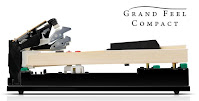 There are no furniture cabinet digital pianos under $3000 that have real 100% wooden white keys which is made out of real spruce wood and those keys are “all wood” and not just
There are no furniture cabinet digital pianos under $3000 that have real 100% wooden white keys which is made out of real spruce wood and those keys are “all wood” and not just
wooden sides.
The bass octave keys also have “counter-weights” built into them to give the heavier bass keys a quicker movement to the action which helps the overall playability of the piano.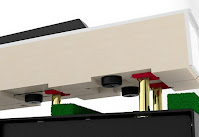 Most white keys in other brands of digital pianos under $3000 are relatively short in length and measure about 7″ to 9″ long but the Kawai CA59 wooden keys measure 12″ inches in length
Most white keys in other brands of digital pianos under $3000 are relatively short in length and measure about 7″ to 9″ long but the Kawai CA59 wooden keys measure 12″ inches in lengthwhich is quite long for digital piano keys. In real acoustic pianos,
especially grand pianos, the keys are even longer and this is because the longer the key length is from front to back of the entire key (the part you can see and the part behind the key cover that you cannot see) the more evenly balanced the key movement becomes.
So when it comes to key action movement and authenticity which is the most important thing in a digital piano and for that matter, any piano, for about $3000 discount price) the Kawai CA59 is a real winner because of its balanced movement up & down the keyboard and from the front of the key to the back on both the white and black keys. To add even more realism to the the key action movement, Kawai has regulated that 12′ (white) wooden key action to have some very impressive and realistic down-weight (aka: static touch-weight) as well as upweight key return.
 In other words, this is the amount of force needed from the fingers to press down the keys
In other words, this is the amount of force needed from the fingers to press down the keys
from key resting position and then the amount of force pressing against the fingers when the key is coming back up is critical for best piano playing technique.
This is true whether you are a beginner and especially if you are an advanced player. Some piano keys are very “heavy” and require a lot of finger force to press down on the keys and if that force (measured in grams) is too high then your fingers,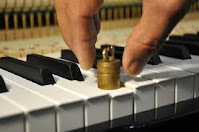
hands, and/or wrists can become fatigued after awhile and that’s not good.

keys. As an example, there is a brand and model digital piano around $2400 (Yamaha YDP-184) with a key action that not only has much shorter keys and all-plastic keys, but the touch-weight in that piano at middle C key measures about 90 grams of force to get the key to go down and about 45 to 50 grams of key return force which is extremely heavy.

force of of the keys coming back up is about 33 grams which is also very good because then the keys are not coming up too hard against your fingers.
Not to overdo my discussion on key action, but Kawai also a couple other things that make their key action more enjoyable to play and that is the key “let-off” (aka: escapement) feature and the synthetic ivory key tops and satin black key tops. The let-off feature is found in real grand pianos and the way that works is when you are playing grand piano keys very slowly, as the key goes down about 1/2 way

or a bit further you will feel a slight hesitation, notch, or bump as the key moves downward.
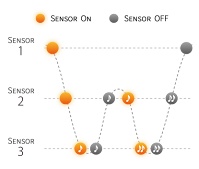
real thing so for me is not a deal-breaker if it is not there…but it is nice to have.
of years ago when real, organic elephant ivory was actually used on the tops of the white keys.
It seams that just about everyone who is shopping for digital piano mentions to me that they want a digital piano that actually “sounds like” a real acoustic piano…but that is easier said than done for a lot of these digital pianos. It takes special piano sound reproduction technology to really make you think your hearing a real piano when playing these digital pianos. The CA59 has 44 instrument sounds divided info 8 separate categories. There are a total of 10 piano sounds in that list with 8 of them being grand piano tones, one being an upright piano sounds, and the other somewhat more electric in tone. The other instrument sounds include strings, organs, vintage electric pianos, harpsichords, mallets, synths, choirs, guitars, and bass sounds. There are no horns, reeds, woodwinds, banjos, accordions, etc in the instrument sound library, just these primary sounds. But it’s the grand piano sounds that most everybody is interested in and how “real” they are.
In the CA59 Kawai uses sampled recording technology to capture a real grand piano tone and this particular piano sound chip in the CA59 is the same one they have used and are using in their higher priced upright digital models. This piano sound reproduction is called the HI-XL stereo sampling piano sound chip with individual 88-key note reproduction and 256-not polyphony piano power. What that all

means is that this chip has more memory content and capability than the Kawai digital pianos below this model and therefore the piano sound will have a higher definition resolution to the piano sound than other digital pianos also with plenty of polyphony power to play even more complex pieces of music without what is known as “note-dropout” which can occur when playing a lot of piano notes (in stereo) and not having enough polyphony power to

handle those notes.
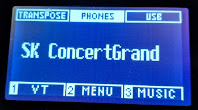
impressive. There are also big differences in each of the acoustic sound selections with some being noticeably brighter, some being more mellow, some being being a combination of bright and mellow depending on how you are playing the music. The other part of the piano sounds that I enjoy when playing this model is that you don’t get the impression that the piano sound is artificial as you would with some other brands and this was very apparent to me.
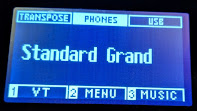
Kawai has done a great job with their recorded sampling technology in capturing a lot of nuances and organic content of what real acoustic grand pianos actually sound like and it is apparent in the CA59 when you play it. It is expressive and natural all at the same time.
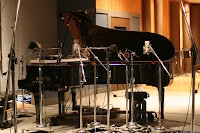
amplified through speakers and there’s nothing you can do about that. But this is true for all other digital pianos so it’s no different for any other brand or model. For most people they will be more than satisfied with the result of the piano sound in the CA59 because Kawai has been able to optimize all of it to sound fairly natural as a real piano would sound and for me personally, I actually really enjoyed it and there are so many good acoustic piano variations that there is definitely something for everyone. That’s the upside to having more piano sound choices in this model than in other brands and models that only have 3 or 4 of them because you can find a great piano sound for all kinds of styles of piano music including classical, jazz, pop, ballads, rock, pop, etc.
When it comes to the “other” instrument sounds in the CA59, I was impressed with almost all of them and that’s something I was surprised about because usually I’ll find just a small handful of sounds that I like in these digital pianos and the rest sound fake and artificial to me. Withe the CA59 I felt like just about all of them were very high quality and definitely musically satisfying. Whether the sounds were string symphonies, pop, jazz, or church organs, the vintage electric pianos from the 50’s, 60’s, 70’s, and 80’s, and other instrument tones, whether using them separately or mixing 2 of them together or splitting 2 of those
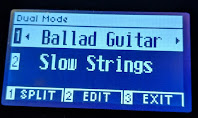
sounds, they were really good and made the piano more fun to play…and its a good thing when these digital pianos can be more fun to play and own. I also like the fact that it’s pretty easy to navigate the sounds in the display screen and select them as well as quickly and easily layer and split them with another sound.
The 3 pedals on a piano are important and if you a beginner then the only pedal you’ll likely be using for a long time if the right sustain pedal. The other 2 pedals is the center sostenuto pedal (a specialty piano rarely used anymore), and the left soft pedal which momentarily dampens or softens the volume of the notes being played. The right sustain pedal is by far the most important pedal because it sustains (holds out) the piano notes for a certain amount of time until those piano sounds naturally fade out and disappear. The amount of time it takes for those piano sounds to fade out on the CA59 is approx 35 seconds which is a very long

time and close to what real acoustic pianos do when holding down the sustain pedal when playing a piano note in the middle to lower octaves and letting the notes sustain for as long as possible.
 The sustain pedal also triggers “half-damper” pedaling which means you
The sustain pedal also triggers “half-damper” pedaling which means you
can get a variable amount of sustain depending where the pedal is when pressing it down
…in other words the pedal sustain is not just on & off. On some other digital pianos I have played the “decay sustain time” and decay volume level tend to be very short (sometimes less than 10 seconds of decay time) and sounds quite artificial and choppy. The CA58 in my opinion has a more natural pedal sustain response along with good “soft pedal” response and the normal sostenuto pedal functioning when needed.There are some other cool digital features on the CA59 which can make the piano playing experience even more exciting which allows for editing the piano sounds to customize them in different ways along with digitally changing the touch sensitivity of the key action and all kinds of other things and the following list is just some of the other things this piano can do: Basic Settings, Headphone Settings to adjust stereo sound position i

n your ears when wearing headphones, Key Transpose to change keys up or down, Song Transpose to change key of recorded songs playing back, Tone Control to change EQ settings of piano sound, Speaker Volume, SHS Mode, Phones Type, Phones Volume Line In Level, Tuning, Damper Hold, Split, Four Hands setting, Bluetooth MIDI, LCD Contrast, Startup Setting, Factory Reset, Auto Power Off , Virtual Technician Settings to edit and change piano sound parameters including Touch Curve (light+, light, normal, heavy,
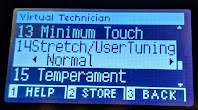
heavy+), Voicing: (mellow, right, dynamic), Damper Resonance, and Damper Noise
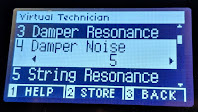
Technician app for iPad and Android tablets where you can visually see all many of these functions and be able to use and trigger them from your color touch screen in a more intuitive way that helps with wanting to try out these functions. The CA59 also has 6 different types of reverb effects that allows you to enhance the piano sounds and overall instrument sounds in a positive way by adding some extra “richness and spaciousness” to the sounds that would not be there with out those effects. Many digital pianos have “reverb effects” but a lot of those reverb./ambience selections are more toy-like in there sonic reproduction and not like the more professional HD quality studio effects you would find on the CA58. There are so many ways to edit the piano sounds to customize them to “your tastes” and I like the fact that not only can you control that process from the piano but that you can also control it from the Kawai proprietary Virtual Technician app for iPad.
However, there are a lot of people who buy a digital piano mainly to play piano and with that in mind having to ‘customize” the piano sounds to further enhance your piano playing experience is not necessarily what most people like to do. So if you are one of those “plug & play” people who just wants to have a great selection of impressive piano sounds and setups, Kawai added what they call “The Smart Mode” which which has factory edited “piano set-ups” already designed by the pro musicians at Kawai. What the Smart Mode does is take those Virtual Technician editing parameters/features and puts them altogether in a variety of “customized” Smart Piano settings that add even more piano realism to your playing rather than you having to figure out how to do it.
Kawai also has ways to save your favorite set-ups so that you do not have to set them up all over again. There is a “registration” feature which stores 16 of your own customer setups including layers of 2 sounds, splits of two sounds together, added special effects such as reverbs, chorus, delays, etc, and other things that you nay have saved for a favorite setting. After saving your setup then you can instantly recall it whenever you want. If you happen to have a favorite piano sound out of the 10 total pianos sounds in the CA59 and you also have a favorite key to play it in that you want to electronically transpose it to, and you maybe want to layer a beautiful concert string symphony sound with that stereo grand piano and you want to have the piano always come up that way when you power up the piano, then you can do that.
The CA59 has some impressive recording functions for people who want to do recording of their music which can be useful if you are a beginner student and want to hear how you’re doing on your piano practice independently for both left & right hand practice or if you are an advanced player and want to make a serious digital audio recording of your music or composition. There is a standard 2-track MIDI recorder for left & right hand recording and playback and uses MIDI instrument format to record the sounds in the piano to playback your song.

sound recording and playback are audio files and the CA59 has both formats…uncompressed wav file recording and also compressed MP3 recording (iTune type audio files).
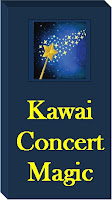
On Kawai certain digital piano models they have had included a special proprietary fun educational learning system for many years that has been great for beginner students and for people who may play the piano but just want to have some added musical enjoyment. This exclusive feature is called Concert Magic it is designed to let a person (even with no piano playing experience whatsoever) play along with familiar songs that are built into the CA59, but in a way which offers extensive rhythm and timing training while not having to play the “correct notes” for those songs to sound good. In other words…you can be a bad player but still sound good!
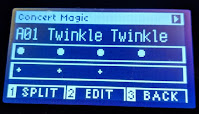
works and helps non-players understand what timing and rhythm is all about. The point is to press the key(s) in a steady constant beat beat without having to worry about playing the right note or even at the right time.
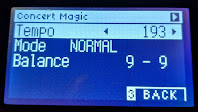
in the correct rhythm time so that it (the beat) comes out correctly and still not have to know the actual notes of the song yet. This takes a bit of getting used to, but once you do its super fun and it makes even 2 year old children sound good and it’s fun for the entire family. There are 176 different well known songs from different eras and music categories within the Concert Magic Music Library along with different modes of learning including Easy Beat, Melody Play, and Skillful. I have played with this Concert Magic
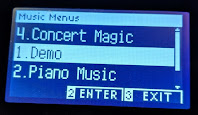
feature a number of times on a variety of Kawai digital pianos and I always have fun doing it.
In addition to those learning functions, Kawai also has built-in piano lesson songs in the CA59 which are derived from well known piano lesson curriculum that teachers use all over the country. So what you can do is purchase the actual lesson books at a music store for these piano lesson songs and then when you are learning to play piano, you can actually hear the songs live on the CA59 as well as slow down the tempo of those songs while you’re learning and practicing them, and also listen to the left hand and
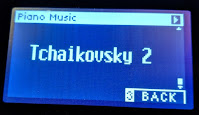
right hand parts separately so you can better understand what is actually going on.

Sonatinen Album 1, Chopin Walzer (Chopin waltzes series), Alfred’s Premier Piano Course Lesson 1A, Alfred’s Premier Piano Course Lesson 1B, Alfred’s Basic Piano Library Lesson Book Level 1A, Alfred’s Basic Piano Library Lesson Book Level 1B, Alfred’s Basic Adult Piano Course Lesson Book Level 1. I think that some people will take advantage of these hundreds of songs, especially if they are taking lessons from a teacher who uses some or all of these lesson and songbooks.
The connectivity inputs and outputs of the CA59 is fairly extensive and definitely an upgrade from the lower price model Kawai CA49. The features include USB MIDI output, USB flashdrive input, Standard MIDI input and output, two 1/4″
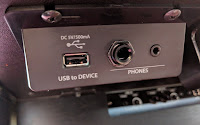
line out audio jacks with volume control knob, 1/8″ stereo line input jack with volume control knob, 1/4″ and 1/8″ stereo headphone jacks, and Bluetooth MIDI wireless connectivity. There are different Bluetooth types of connectivity on digital pianos and the CA59 has both Bluetooth MIDI and Bluetooth audio streaming. Bluetooth audio wireless is when you can stream songs from an external song library in your device (iPhone, iPad, Android, etc) to hear that music come through the speakers of the digital piano. The
![]()
CA59 can do that whereas the previous CA58 could not do that.
Every digital piano out there needs to have a good internal speaker system to project the sound coming out of the piano and the CA59 has a new upgraded sound system built for them by the Onkyo audio company that puts out a higher quality sound than in the previous CA58 model. The audio power of the CA59 is 100 watts and it has 4 internal speakers. Sometimes there are just 2 power amplifiers powering the speakers in other brands and models and sometimes there are 4 separate amplifiers, one for each speaker. The CA59 has a total of 100 watts of audio power powered by two 50 watt amplifiers all going through 4 speakers. Two of those four speakers are larger than most of the other digital pianos in this price range that have 4 speakers so coupled with the 100 watts of audio power and 4 higher quality larger speakers, there is plenty of volume that comes out of this model along with very good bass response, even at lower volume levels.
So in terms of the speaker system pushing out a healthy amount of sound, it does a good job although I would have preferred to see 4 amplifiers in this model instead of two, but it works fine and still sounds good. There is a speaker projection grill just to back of the piano top which allows the sound to come up and out of the top back of the piano. This is a cool feature which I have not seen on any other brand of piano in this price range. The sound coming through stereo headphones is also powerful and can be adjusted from the piano for the ‘stereo field” of the headphones as far as how you hear it and the projection of that sound all around your ears. Kawai calls that feature “spatial headphone sound” and it can make a big (positive) difference in your piano playing experience when using a good pair of stereo headphones. I like the way Kawai implemented this virtual spatial technology in enhancing the headphone piano listening experience with different piano sound positions.
The Kawai CA59 cabinet is attractive and well designed in my opinion with nice geometric lines and curves that give it a bit of subtle elegance without looking boxy and old. The cabinet finishes are well done and come in satin (matte) black, dark black rosewood, and satin white along with a standard size matching padded bench with music storage. The cabinet finishes have a bit of a “sheen” to them but they are not the glossy polished finishes available in other models. The key covers in this model work nicely sliding back and forth to cover up the keys and the music racks that support the sheet music are adjustable, can even lay flat if needed,
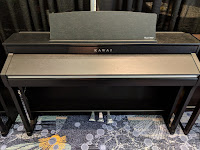
and they work well. The measurements of the cabinet are 57″ wide x 18″ deep x 36″ tall with the music rack folded down so it is overall fairly compact for what it is.
is absolutely superior in every way as compared to the other major brands out there in this price range and even beyond this price range.
When you put this all together and add a competent internal speaker system, some impressive and usable digital features, great connectivity all put into a very nice looking cabinet, this piano is a real winner. Kawai offers a 5-year parts and labor warranty with in home service on this model so it is well protected. In fact, I doubt you would ever need to use this warranty because judging from what I know so far, this model has had virtually no issues in terms of operation or cabinet and should last for many, many years.
If you want more info on new digital pianos and LOWER PRICES than internet discounts, please email me at tim@azpianowholesale.com or call direct at 602-571-1864.
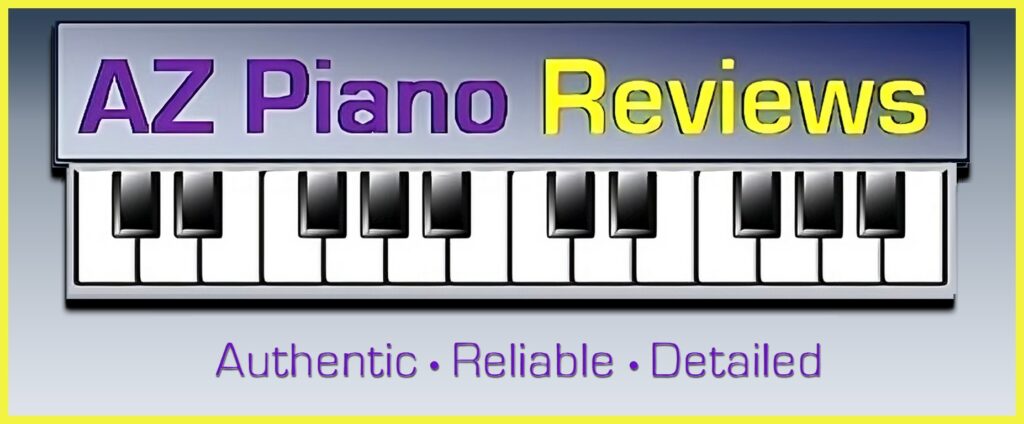


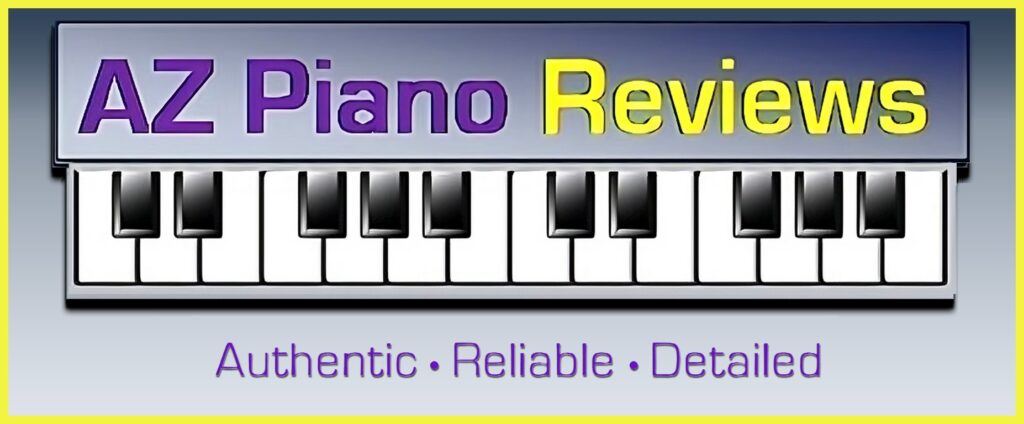

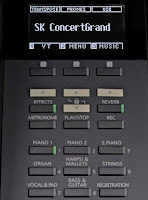
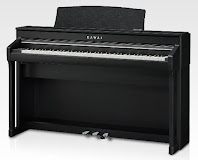

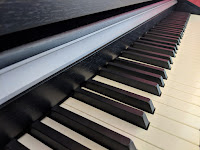

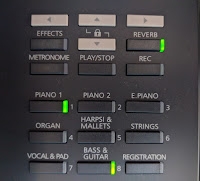

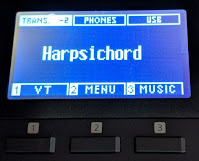
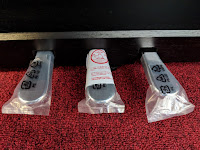

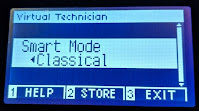
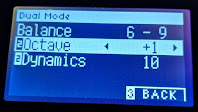
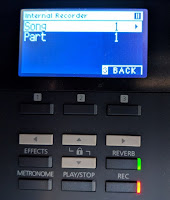
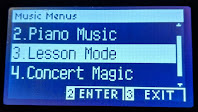

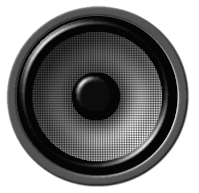
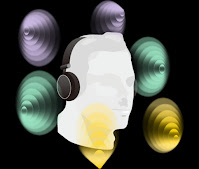
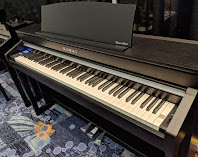
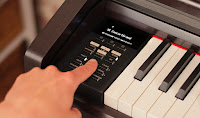



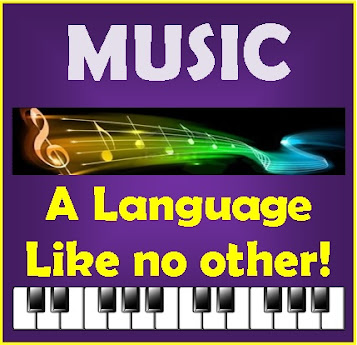

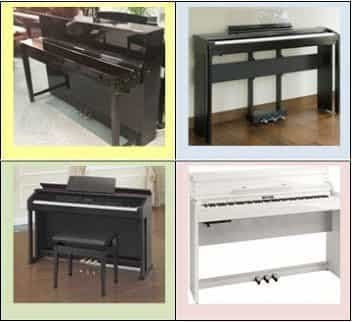


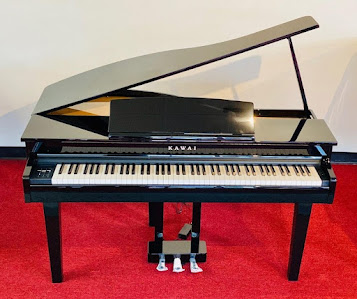
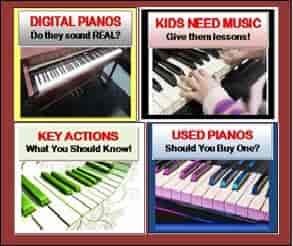
how does this compare to key action of CA48? is it a significant upgrade?
Hello,
Thank you very much for your comprehensive reviews.
I was to buy the Yamaha CLP645 piano when I checked your review of the Kawai CA58.
To me the touch is good in both pianos. Would you recommamd to buy the Kawai piano instead?
Hi. Could you help me decide between Ca 59 or clp 745?
Hi. Can you help me decide between ca 59 and clp 745?